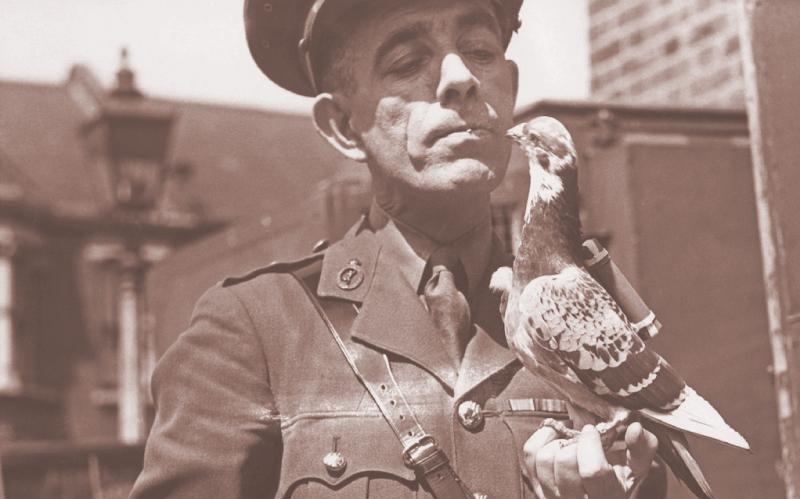
As it was understood that the pigeon is a bird with special intelligence, pigeons were used to exchange messages even during wars. It is said that certain species of pigeons can be well trained to recognise different letters and words. As a result, many pigeons were involved in military operations during the First and Second World Wars.
Germany represented the Central Powers in the First World War that started in 1914. At the time, the Germans used pigeons to carry messages, so several specially trained pigeons were assigned to each mission.
The main duty assigned to the pigeons used for war operations was to deceive the enemy and carry war secrets around during the critical moments of the operation. The pigeon named Kaiser was born in February 1917 in Germany. Born to a pigeon breeder, it was handed over to the German army at six weeks of age to be trained to carry messages in war.
After sufficient training, an aluminum plate bearing a number was wrapped around the left leg of Kaiser. The first two digits of the number represented the year of Kaiser’s birth. It was first assigned to the Meuse-Argonne battle in France in 1918.
Kaiser’s help
A fierce battle took place between the American and German forces in the Argonne Forest. There, while the American forces fiercely attacked the German forces, the Germans scattered in small groups and strategically counterattacked the enemy. Kaiser provided great assistance in carrying messages between these scattered groups.
The German forces were in a difficult situation due to the attacks of the American forces in the Argonne forest. They continued to fight unswervingly in the face of the enemy, but in the end had to accept defeat.
In October 1918, a group of German soldiers fighting in the Argonne Forest became prisoners of the Americans. American troops also took over the weapons belonging to their enemies. Around 10 German pigeons were also arrested by the American forces and Kaiser was among them.
The First World War ended on November 11, 1918. American soldiers who had come to Europe to fight in the First World War were sent back in batches. By that time, the US Army had also established a large pigeon signal force. The force played a major role in the First World War.
The American forces decided to take 21 German pigeons including the Kaiser captured on the battlefield to America. In July 1919, 21 pigeons including Kaiser were taken to America by the American transport ship Luckenbach. They were housed at the Monmouth Pigeon Signal Centre in New Jersey.
Pigeon Signal Corps
Kaiser’s offspring were just as smart as him. They became fast, agile and efficient pigeons. As such, many of Kaiser’s offspring were assigned to the American Pigeon Signal Corps. As time passed, something happened to Kaiser that was difficult to bear. It was the sudden death of his companion. After that, Kaiser spent his time in great anxiety. The pigeon signal officers who observed it found a new companion for Kaiser. The female pigeon named Belly lived with Kaiser in its special room.
In September 1939, the Second World War began. Even after two years of the start of the war, America did not join it. America joined the war after Pearl Harbour was attacked by Japan. American troops were sent to Europe.
A group of pigeons belonging to the American Pigeon Signal Corps also left for Europe with them. Among them were many of Kaiser’s offspring. During the Second World War, Kaiser and its offspring did great service for America. Kaiser, who served for Germany in the First World War and America in the Second World War, became famous in many countries.
In 1946, Kaiser was placed in a cabin in New Jersey. Both Kaiser and Belli spent their time there. Because Kaiser was old at that time, the American forces even installed an electric heater in its cabin. On February 27, 1948, the troops in charge of the Pigeon Signal Corps celebrated Kaiser’s 31st birthday. In August 1948, a gold band inscribed with the number 667 was attached to its leg to commemorate his service in two world wars. Kaiser, who lived in America for a long time, died in 1949, at the age of 32.
